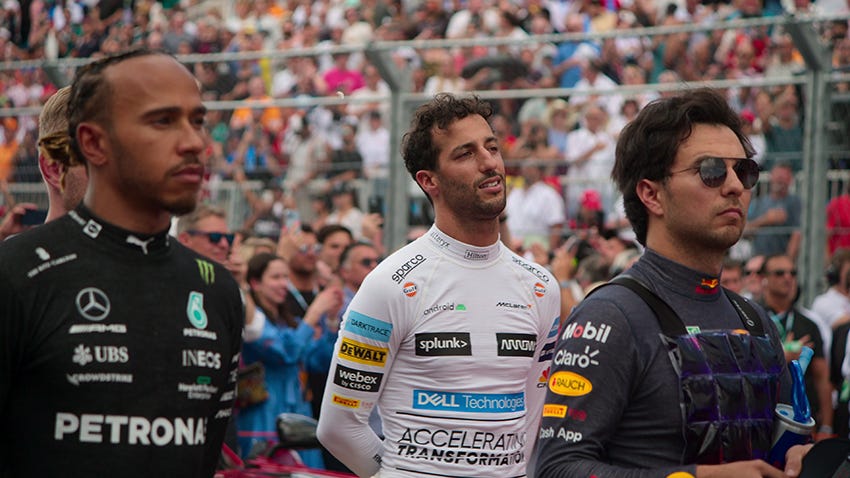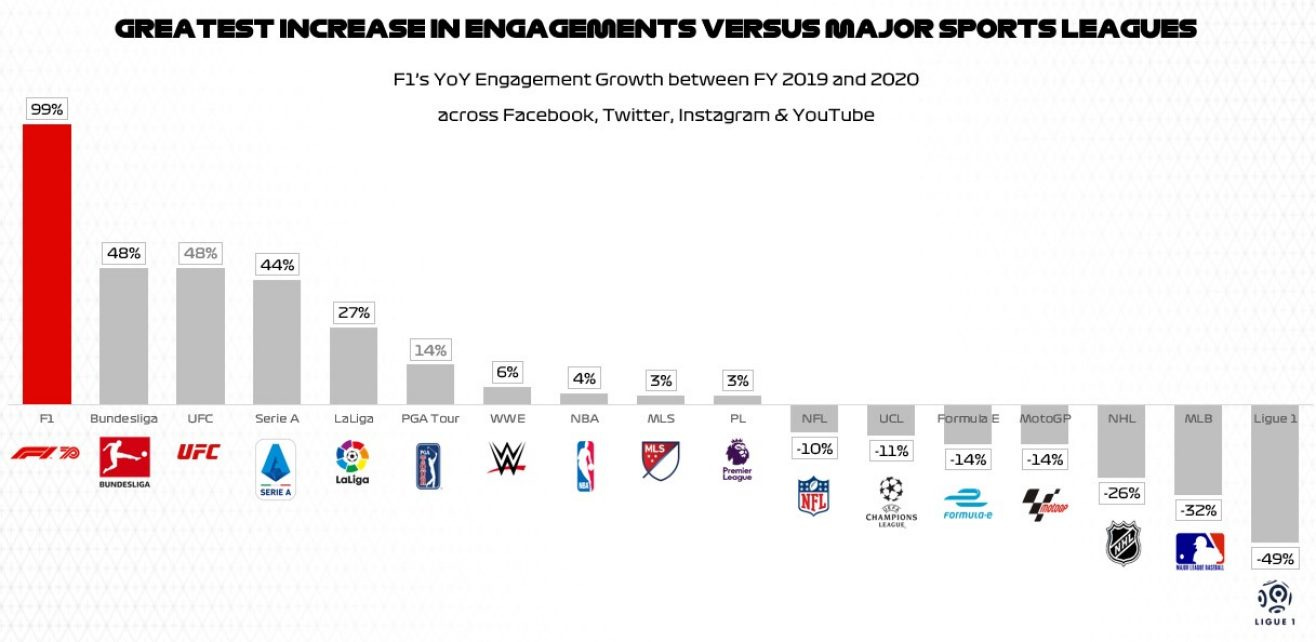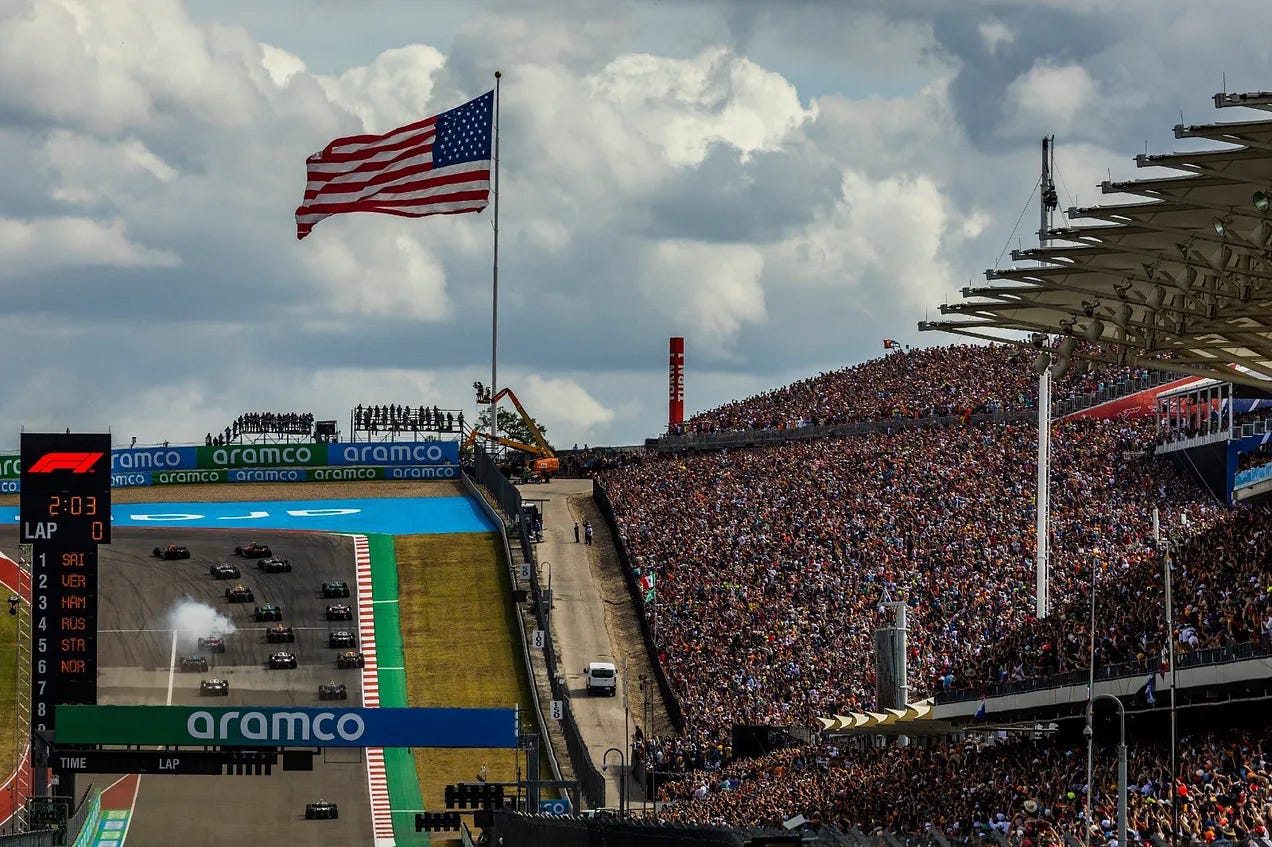How Formula 1 Became The World’s Fastest Growing Sport
Huddle Up is a 3x weekly newsletter that breaks down the business and money behind sports. If you are not already a subscriber, sign up and join 100,000+ others who receive it directly in their inbox each week. Today At A Glance:The 2nd running of the Miami Grand Prix took place this past weekend. So today’s newsletter breaks down how Formula 1 became the world’s fastest-growing sport, including Liberty Media’s $4.4 billion purchase, its unique content and broadcasting strategy, and the sport’s relentless focus on US expansion. This newsletter is also available via podcast on Apple or Spotify. Enjoy! Today’s Newsletter Is Brought To You By Hyperice!Hyperice is one of the fastest-growing companies in sports. They are the Official Recovery Technology Partner of the NBA, MLB, PGA TOUR, and UFC, and you’ve probably seen athletes like Patrick Mahomes and Erling Haaland using their products. But Hyperice isn’t just for pro athletes. I use their massage gun and heated back wrap several times each week, and it’s become a game-changer for my health and wellness. So check out Hyperice today and start recovering like a professional athlete. All Huddle Up subscribers can use code JOE15 for 15% off their order. Friends, Max Verstappen won the second running of the Miami Grand Prix this weekend, holding off teammate Sergio Perez to stretch his championship lead to 14 points. Formula 1 World Drivers Championship Standings
And the second race in Miami might have been an even bigger spectacle than the first. For example, more than 270,000 fans were in attendance this weekend, roughly 30,000 more than last year. Dolphins owner Stephen Ross debuted his new $100 million, 190,000-square-foot, state-of-the-art permanent Paddock Club. And celebrities like Jeff Bezos, Elon Musk, Roger Federer, Tom Cruise, Patrick Mahomes, and Serena Williams were seen at Hard Rock Stadium throughout the weekend. But more importantly, it shows how far Formula 1 has come over the last 7 years. When Liberty Media purchased Formula 1 in 2016 for $4.4 billion, the world’s fastest sport looked a lot different than it does today. Sure, it was a global sport that raced in 21 countries, and they were doing nearly $2 billion in annual revenue. But viewership had dropped about by about 40% during the previous decade, and their 86-year-old CEO was out-of-touch with reality.
So this is where Liberty Media comes in. They saw a global sport with hundreds of millions of fans that was drastically under-monetized compared to their US counterparts, and they negotiated a deal to purchase the racing series for $4.4 billion. 2017 Revenue By League
And that’s when the fun began. In 2017, Liberty Media proposed a plan to reverse the effects of an aging fanbase and build F1 into a 21st-century digital sports league. They launched an over-the-top (OTT) streaming platform called F1TV, and they set up an esports series that saw 80% of its audience come in at less than 35 years old. They relaxed league-wide social media rules, allowing teams and drivers greater freedom to engage with fans online, and they altered the rules to allow for more overtaking. But most importantly, they partnered with Netflix to launch F1: Drive to Survive, a docu-series that provided a behind-the-scenes look at the inner workings of the sport. And the results have been fantastic. Mercedes and Ferrari refused to participate in the first season of the Netflix show because they thought it was dumb, but the show is currently filming season six, and it has been the primary growth driver for Formula 1. Formula 1 race weekends now look like music festivals. There are concerts and fan engagement events throughout the weekend, and hundreds of thousands of people pack each venue just to have the chance of potentially seeing their favorite driver. And this entertainment-first approach has attracted an entirely new set of fans. Formula 1 is now the world’s fastest-growing sports league on social media. The average age of an F1 fan has dropped from 36 years old in 2017 to 32 years old today, which is drastically lower than the MLB (57), NFL (50), NHL (49), and NBA (42). And Liberty Media says that 1 out of every 3 fans didn’t even watch the sport 4 years ago. But while adding more fans is essential, the *type* of fan is even more critical. You see, Formula 1 didn’t really exist in the United States before Liberty Media acquired the series in 2016. Sure, the United States Grand Prix was already running in Austin, Texas, for several years. But there was little-to-no national coverage, and the average Formula 1 race was getting less than 500,000 viewers in the United States. So Liberty Media literally gave ESPN the broadcasting rights for free. The plan was to combine their distribution network and social media presence with F1’s increasingly content-focused growth strategy to build the sport into a global powerhouse. And it worked. F1 races are now averaging more than 1.2 million viewers per race in the United States, and last year’s US Grand Prix in Austin had 440,000 attendees. US Grand Prix Attendance (3-day)
That made it the most-attended three-day event in Formula 1 history, and Liberty Media said 70% of the 400,000 fans were attending their first-ever Formula 1 race. This growth isn’t slowing down either. F1 recently purchased a 39-acre piece of land in Las Vegas for $240 million so they could build a 4-story, 300,000-square-foot permanent paddock building. And starting this year, the United States will have more F1 races than any other country, with Grand Prix’s in Miami, Austin, and Las Vegas. Now, I don’t necessarily think F1 will add another US race anytime soon. There are already 3 US races, as well as races in Canada, Mexico, and Brazil. And Africa is also much more likely to get a race before another North American city is considered. But I do think Formula 1’s Las Vegas approach is interesting. For those that don’t already know, F1 is an extremely asset-light business. They don’t own the cars, teams, or race tracks, and venues simply pay them a fee ($40M+) to host a race each year. But the sport is taking a different approach in Las Vegas. Formula 1 will run that event themselves rather than just renting out their valuable audience and IP to an event organizer. And my guess is that if that goes well, Liberty Media will realize how much more money they can make and do it more often in the future. Thank you for reading Huddle Up. This post is public so feel free to share it. I hope everyone has a great day. We’ll talk on Wednesday. Interested in advertising with Huddle Up? Email me. Your feedback helps me improve Huddle Up. How did you like today’s post? Loved | Great | Good | Meh | Bad Huddle Up is a 3x weekly newsletter that breaks down the business and money behind sports. If you are not already a subscriber, sign up and join 100,000+ others who receive it directly in their inbox each week.
© 2023 |





